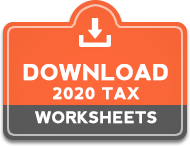
We are truly living in unique times
March 31, 2020
STARTING A BUSINESS AND NOT GETTING PAID: Can I collect EI?
May 24, 2020Writer: JAMIE GOLOMBEK Tax Expert Financial Post Jamie Golombek, CPA, CA, CFP, CLU, TEP is the managing director, Tax & Estate Planning with CIBC Private Wealth Management in Toronto. Jamie. Golombek@cibc.com
Calgary Herald
It’s been nearly two months since millions of employees started working from home as a result of the COVID-19 pandemic, and the question on many of our minds is whether we can deduct various home-office expenses from our 2020 income next tax season.
Some employees who received a technology allowance or reimbursement from their employers to upgrade their home computer equipment are also wondering whether they will have to include this amount in their 2020 income as a taxable employment benefit.
Under the Income Tax Act, employees who are required to pay for employment expenses, including those for a home office, that are not reimbursed by their employer may be able to claim a deduction on their return for such expenses. For a valid claim, employees must generally obtain a properly completed and signed Canada Revenue Agency Form T2200, Declaration of Conditions of Employment.
How a simple flowchart can increase your efficiency and efficacy while working remote
Take your natural skill set to the next level and bring in extra income
Seven tools to set you up for success as a new freelancer
Let’s review the tax deductibility of home-office expenses as well as the taxability of employer-provided technology allowances and reimbursements in light of the current environment in which employees are being required by their employers to work from home and abide by the government’s rules around social distancing.
Home-office expenses
To be entitled to deduct home-office expenses, an employee must be “required by the contract of employment” to maintain such an office, as certified by the employer on the T2200. The space must also be either where she “principally” (more than 50 per cent of the time) performs her duties of employment or be used exclusively to meet customers on a regular and continuous basis in the course of employment. Either of these conditions could be difficult to satisfy in light of the current pandemic situation.
First, with regards to whether or not the work space is the place where an employee “principally performs” her work duties, it’s currently unclear whether this calculation must be done on an annual basis or whether a shorter period of, say, two or three months of mandatory working from home would be sufficient to qualify under the 50 per cent or more test.
The second condition raises the question as to whether online virtual meetings and conference calls could cause an employee’s exclusive home office to be viewed as a place where an employee regularly meets customers.
In a 2013 technical interpretation, the CRA was asked whether the phrase “meeting customers” should reflect “modern technology” and include meetings by such means as e-mail, telephone and Skype. The CRA responded that, in its view, the phrase “meeting customers” only includes face-to-face encounters. It recognized that some informal Tax Court decisions have held that the phrase “meeting customers” in the Tax Act could include meetings held by phone, but since these cases were decided under the informal procedure system (akin to small claims court for tax disputes), they are not to be treated as a precedent for any other case.
In a recent article, however, David Robertson and Laura Jochimski from EY Law speculated that given how the current pandemic is causing the location of work to rapidly change, “it will only be a matter of time before the Tax Court is called upon to express its views,” (presumably, in a binding precedential decision).
If every employee needs to get a signed T2200 from their employer to justify a home-office deduction, this will put an enormous strain on employers come next tax season. To this end, the Canadian Tax Foundation in conjunction with CPA Canada approached the government to ask whether a streamlined approach could be used in lieu of requiring each employer to issue its own Form T2200 evidencing that their employees were required to work from home during the pandemic. No response has been received to date.
What home-office expenses can you deduct?
Assuming you do qualify to write off home expenses, you would be able to deduct a variety of expenses, such as the cost of electricity, heating and maintenance, but you can’t deduct mortgage interest, property taxes, home insurance or capital expenses or depreciation (capital cost allowance). That means the cost of that new, ergonomic office chair you just had delivered won’t be deductible, nor would the cost of a large, widescreen monitor, both of which would be considered capital expenses.
For utilities and other expenses, you need to allocate the expenses on a “reasonable basis,” which is typically done by taking the area of your work space divided by the total finished area (including hallways, bathrooms, kitchens, etc.) of your home. If you rent the house or apartment where you have your home office, you can also deduct the percentage of the rent you paid that relates to your work space.
Technology allowances and reimbursements
To facilitate working from home during the pandemic, some employers have given their employees a technology allowance, which can be used to cover expenses such as upgrading home computers, buying webcams or investing in better headsets to facilitate Zoom meetings. Other employers may be simply reimbursing their employees for such purchases.
An allowance and reimbursement are similar, but the main difference is that with the former there is generally no direct, dollar-for-dollar relationship between the allowance paid and the actual costs incurred by the employee.
In a technical interpretation letter released this week, the CRA stated that, in normal circumstances, an allowance paid by an employer to an employee to facilitate teleworking would be considered a taxable benefit, as would the reimbursement for personal expenses to acquire technology used for teleworking.
The CRA went on to say, however, that given the current COVID-19 pandemic, it is prepared to accept that the reimbursement of up to $500 towards the cost of personal computing equipment to enable an employee to work from home would be considered to primarily benefit the employer and, as a result, would not result in a taxable employment benefit, provided the employee presents a receipt for the amount spent.
While we wait for the CRA to clarify the rules surrounding the deductibility of home-office expenses under COVID-19, be sure to keep track of any expenses incurred while working from home so that you can easily claim them, if permitted, next tax season. And, if your employer has agreed to reimburse you for the cost of some new home computer equipment, be sure to keep those receipts to corroborate a tax-free reimbursement.
Jamie Golombek, CPA, CA, CFP, CLU, TEP is the managing director, Tax & Estate Planning with CIBC Private Wealth Management in Toronto. Jamie.Golombek@cibc.com







